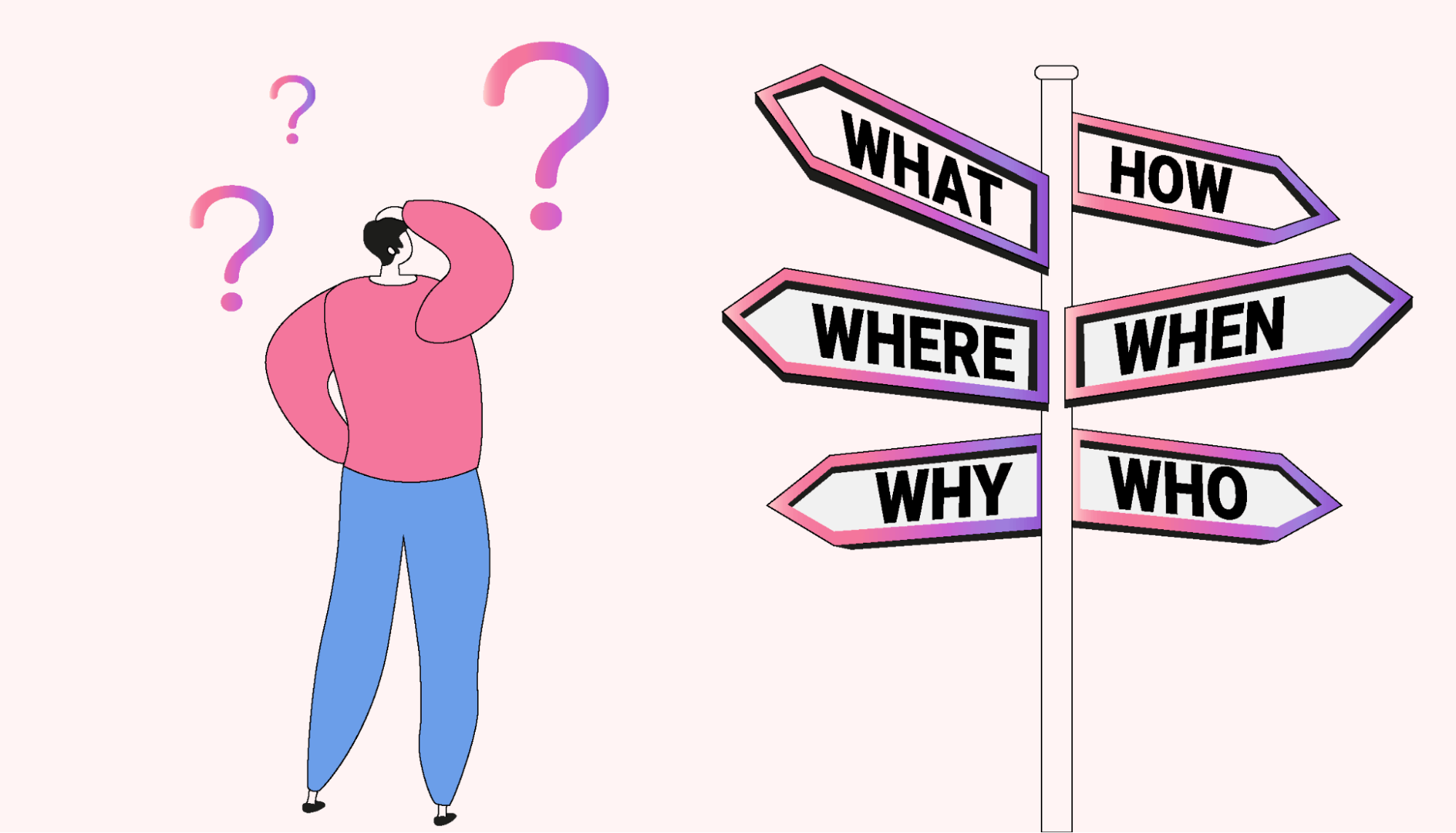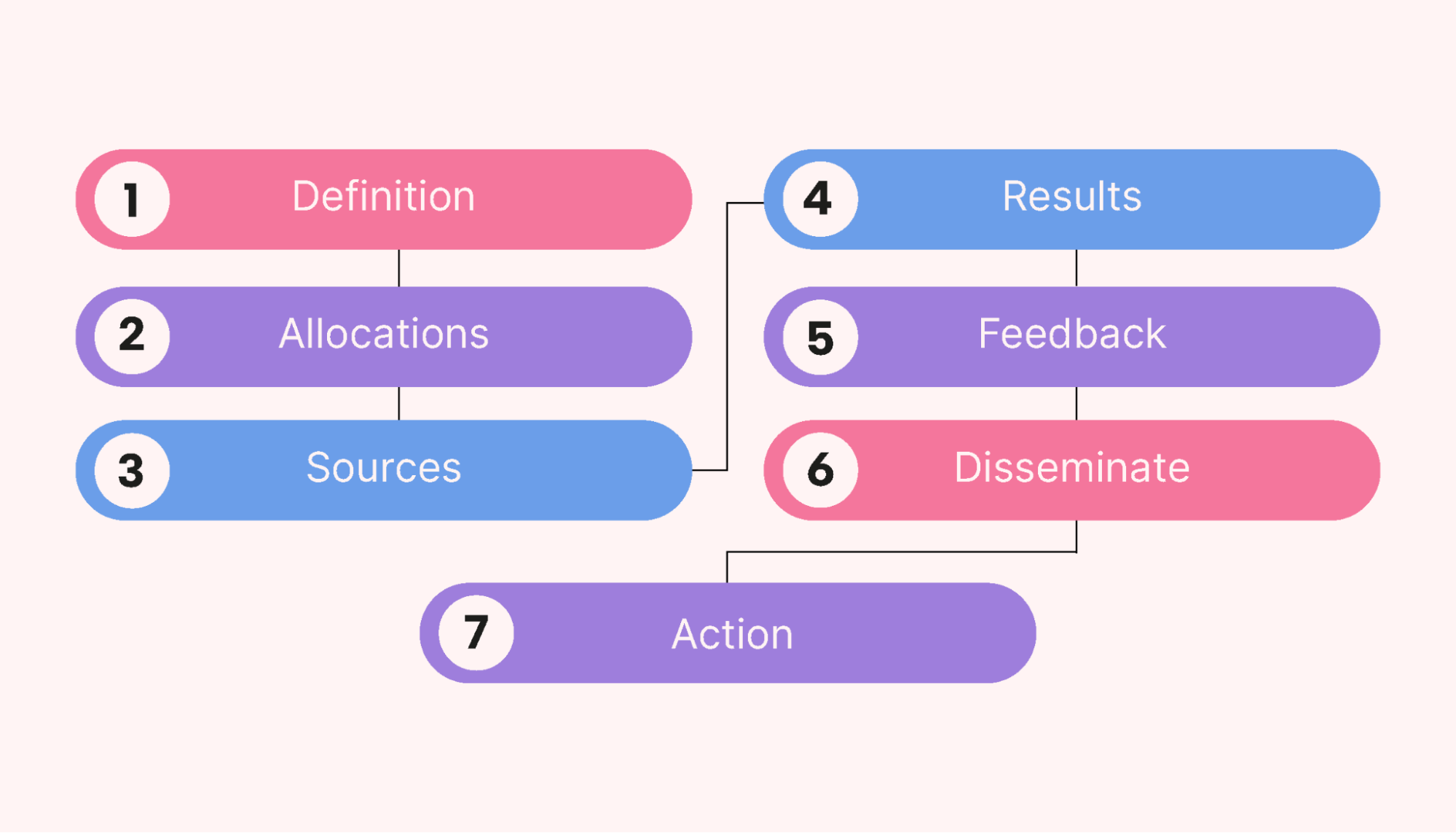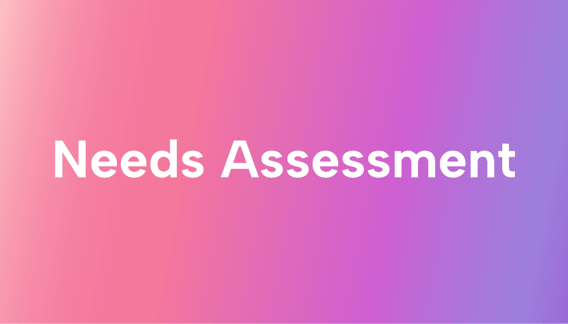Conducting a needs assessment is handy when you’re running a business, involved in a nonprofit organization, or even when you're a public servant. It helps you identify what’s lacking in a product, process, or service and what needs improvement.
But it doesn’t end there. Needs assessments aren’t limited to individual or even organizational needs. They often also consider external factors such as political trends, economic conditions, and demographic changes that may impact community development or an organization.
While this broader perspective helps to identify potential challenges and opportunities for growth and development, the technique also has limitations. How you do it makes a massive difference. Because a needs assessment involves data, the same exercise might have an entirely different outcome for different collection methods, communities, timing, and other variables.
What is a needs assessment?
A needs assessment is quite similar to a gap analysis. It’s a systematic process of gathering information to identify the gaps between current conditions and what you expect or want to see in the future. By assessing these two states, you can determine what you must do to get from one state to another.
The idea is to determine what is lacking or needs improvement to meet the needs or expectations of your target market or community. It usually involves thoroughly examining and assessing a business, organization, or community's needs, resources, and priorities.
Why do needs assessments?
The exercise aims to help leaders, organizations, and individuals define problems and make informed decisions on corrective measures. It also helps them to plan effective strategies that help to develop and improve the environment for the business, organization, or community.
However, the crucial element here is the desired outcomes. These don’t just appear out of thin air; they must be thought through and clearly defined by someone involved in the business, organization, or community.
 |
For example, let’s say your business or community outreach program has received negative reports about your call center. A needs analysis will help you to identify the problem and take corrective action.
When to do them
You can conduct a needs assessment at any time. But it’s usually something you’d do when you know something’s not working as you’d like. The exercise will allow you to get to the bottom of the problem and give you the necessary information to take appropriate action.
A needs assessment is also a good thing to do if you’re considering starting a new business, project, or initiative. It’ll help you generate an outcome tailored to the market, individuals, or communities you are trying to serve.
How best to assess needs
At its core, a needs assessment is about data. You need to collect, analyze, and then use that analysis to inform your decision-making. You should always begin with existing data because that will expose gaps where you may still need to get data.
Gathering existing data
This crucial step in the needs assessment process involves collecting, examining, and analyzing the existing data within your business, organization, or community. Doing this will provide a foundation of knowledge that you can build upon.
The data you collect may come from many sources. These could include financial statements, customer complaints, other internal records, market research, government reports, academic studies, or community surveys. It’s worthwhile to cast your net as wide as possible because the more data you have, the more likely you are to make the right decisions.
Different collection methods
There are many ways to collect the data required for your needs assessment. You can run a survey, do interviews, conduct focus groups, do community or target market mapping, or even search for trends in your existing organizational data.
However you choose to collect the data, you need to follow the same basic structure, or you risk including incomplete or inaccurate data in your analysis. Collecting the data is itself a six-step process:
- Define your purpose — ensure you know what you’re trying to achieve with your data collection method.
- Identify your stakeholders — determine who must be involved in the process and what they’ll do.
- Select your method(s) — decide the most appropriate method for collecting the data you seek.
- Finalize your questions — however you collect the data, you’ll need to be clear, concise, and relevant to your purpose. Use simple language, and, for quantitative data, closed-ended questions are best, while open-ended questions are better suited for qualitative data.
- Test and refine your method — select a small sample of your target group and conduct a pilot test.
- Collect your data — proceed to collect the data using your chosen method.
 |
Needs assessment templates
There are a great many needs assessment templates available online these days, but one of the most comprehensive collections is on examples.com. They cover a wide scope, are available in many formats, and can easily be repurposed to assess your needs in a particular area.
Other sources that can offer helpful starting points are template.net, sampletemplates.com, or The University of Texas Health Science Center at Houston.
Any of these can get you up and running, but it’s worth noting that the more targeted your needs assessment is, the more likely it is to produce positive results. Yes, you need a lot of data, but that data must be relevant to your purpose if it is of any value to you.
This is where the National Institute for Children's Health Quality’s guide can be instrumental. It’s called Seven Steps for Conducting a Successful Needs Assessment.
Seven steps to success
Although it’s aimed at the public health sector, it provides an advantageous structure for conducting needs assessments in any field. The seven steps are:
- Step one: Define your goals clearly. You need to understand exactly why you’re doing the needs assessment and what you’ll do with the results.
- Step two: Consider your resources and capacity. A lack of time, money, and staff capacity has derailed many data-gathering exercises.
- Step three: Identify your targets and sources. Who can help you assess your needs? Do they have competing priorities? And how can you encourage them to participate?
- Step four: Analyze the data. Focus your analysis on your needs assessment objectives and consider graphs, tables, and other visuals to summarize the data. Use a narrative to dig into the details.
- Step five: Get feedback. This is critical. People see things differently, and your focus on the data may have you too invested in your report. That’s why discussing results with a diverse and inclusive audience is worthwhile.
- Step six: Share your findings. It helps get everyone on the same page if they understand the why behind your project priorities and resource allocation.
- Step seven: Act. Now, it’s time to reap the rewards. Use your findings to develop project approaches and strategies, a rollout plan, team make-up, and deadlines.
 |
Where to use needs assessment
There are many areas where you could find a use for needs assessments. Because the process helps you determine what needs to be accomplished to reach your goals, it offers a great way to identify the materials, resources, and skills you need.
HR and training
In managing human resources, it’s become standard practice to use needs analysis in career development and to guide training choices. Let’s return to the call center example. You have some customer complaints about service quality and long wait times. That’s some data, but you could get more by interrogating the call logs.
That might help you identify specific agents not up to the job or who need training. To confirm that, you might automate a simple service rating survey at the end of each call. Once you’ve analyzed the data, you can move some staff and schedule training for others. You may also adapt your training policy going forward.
In business
It often happens in a business, especially in small- or medium-sized businesses, that customers will approach you to ask for a product or service you don’t already provide. If it’s a one-off request, that’ll be the end, but sometimes, it may get you thinking about who else might need that particular product or service.
That’s a clear case for needs assessments. The purpose of one of these would be to learn if it would be a possible additional product line. You already have strong relationships with existing customers, so you could measure possible demand by having your sales team interview them.
If those results are positive, you’d want to assess the wider market, but doing it yourself might give your competitors a heads-up. That’s where you might bring in a third-party market research firm to preserve your anonymity by creating a survey design on your behalf.
Again, the results may show a lot of promise. You could run an internal needs assessment to help you make better-informed decisions about resource allocation to deliver the new product or service. You could involve existing customers in a discounted pilot program to assess the quality of your new venture’s products or services.
Those could be individual needs assessments informed by the previous exercise or one big one. That’s the power of needs assessments in business.
Community development
Community needs assessments focus on understanding a specific geographic area or population's needs, assets, and priorities. The exercise gathers data from community members, stakeholders, and community leaders through surveys, focus groups, interviews, or community forums.
It’d provide valuable insight into specific challenges and community issues and inform your efforts and policies to address those needs. But you need to choose your methods of data collection very carefully.
 |
For example, some communities prefer face-to-face interactions, while others are more receptive to online survey designs. Being sensitive to these cultural considerations can contribute to higher participation rates and more accurate data.
Benefits of needs assessments
There are numerous benefits to using needs assessments, but the ability to prioritize areas of focus is the biggest one. Because it can help you to understand the specific needs of a business unit, organization, or community, you can strategically allocate resources to the areas needing more immediate attention.
This way, you can ensure that your interventions significantly impact the business, organization, or community.
Another benefit of needs assessment is that it allows you to measure and evaluate the effectiveness and efficiency of your current services, products, or programs. This helps you understand what works well and what needs to be better, leading to performance improvements and more efficient utilization of resources.
Limitations of needs assessments
Every tool has its limitations and needs assessments are no different. Firstly, the process can be self-limiting if you rely on only one or two data collection tools. This may restrict the variety and types of data that can be gathered.
Secondly, circumstances always change around us, so the findings of a needs assessment are valid for only so long. Do another one three months later, and you could have completely different findings.
You should also be wary of potential biases in the assessment process itself. Whom you choose to interview or survey could do that, and so could the framing of questions. Especially when dealing with communities, it’s important not to neglect the voices of marginalized groups.
Doing your own needs assessment
Make no mistake: conducting your own needs assessment is no trivial matter. There’s a lot to consider if you want your process to be rigorous and effective in addressing the specific needs of your business, community, or organization. Many different factors can affect the quality and accuracy of your data.
Motion’s AI-powered calendar and task manager help you to manage the process, schedule tasks, and action the improvements identified by your needs assessment. The intelligent calendar will manage your time, keep you on task, and help you focus on critical work.





